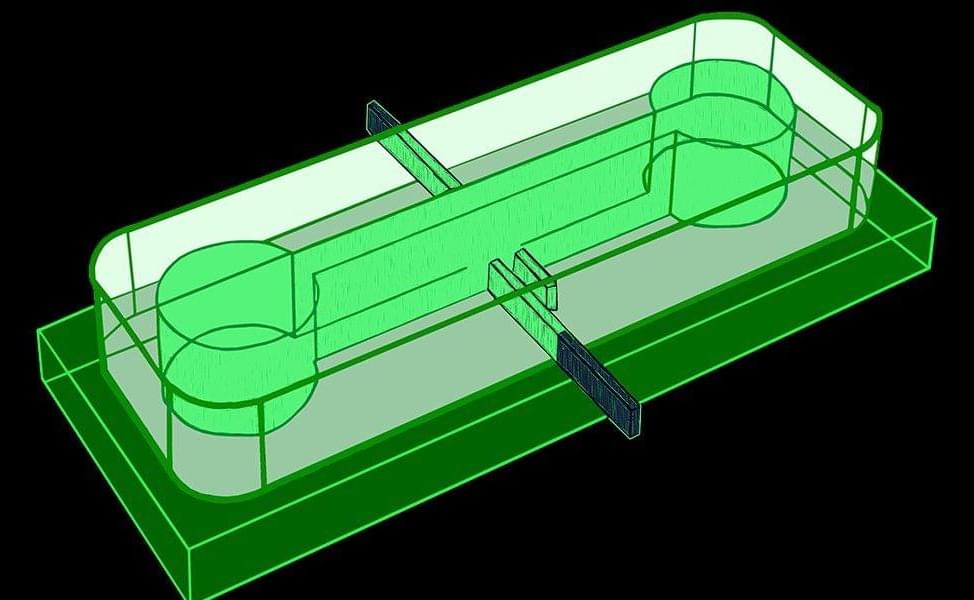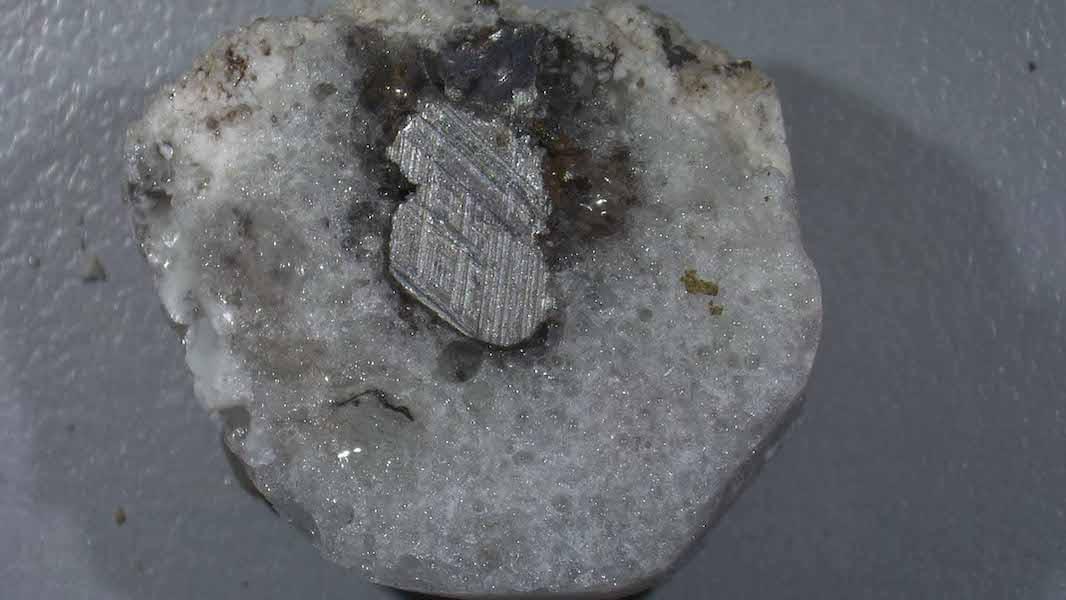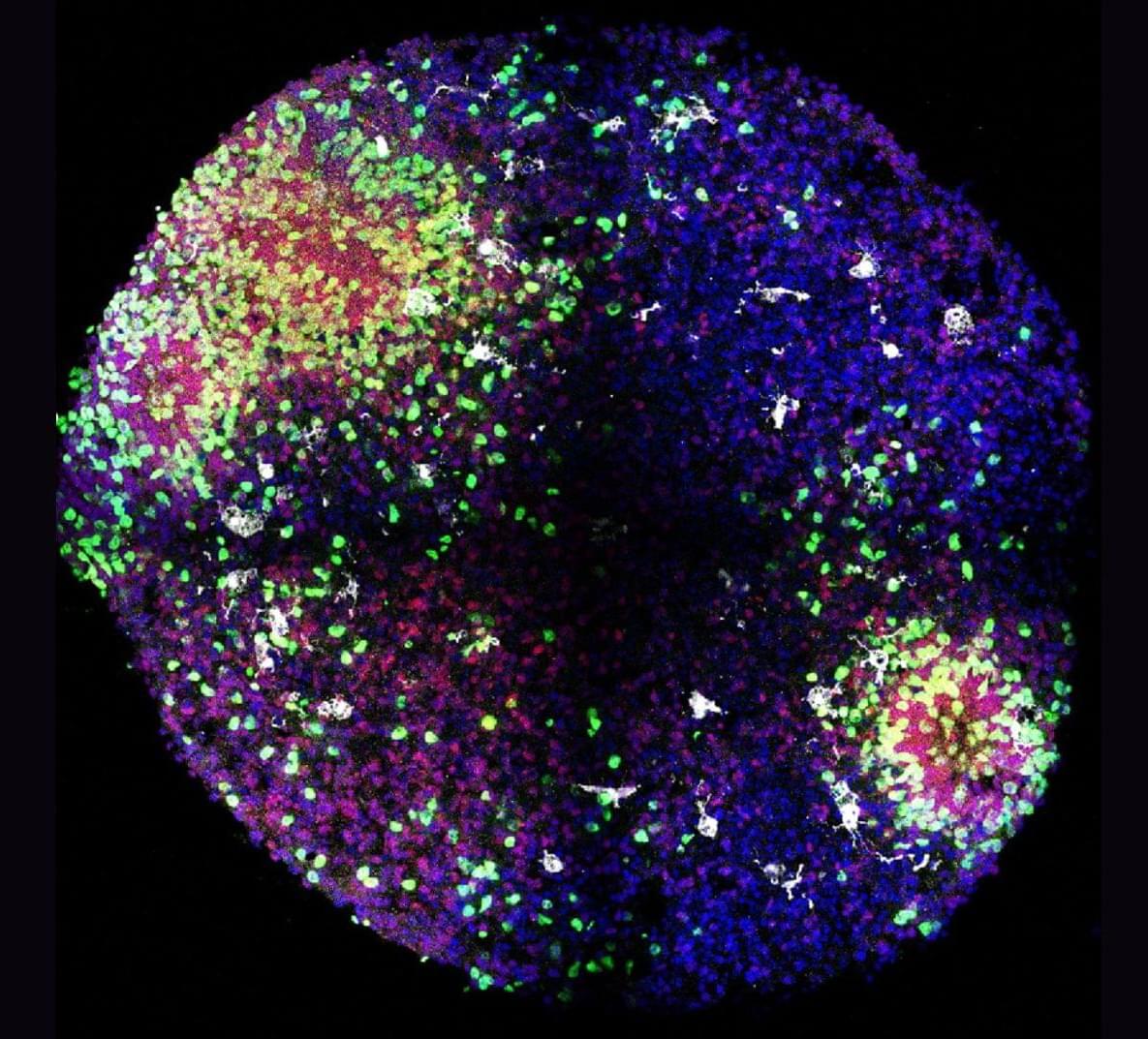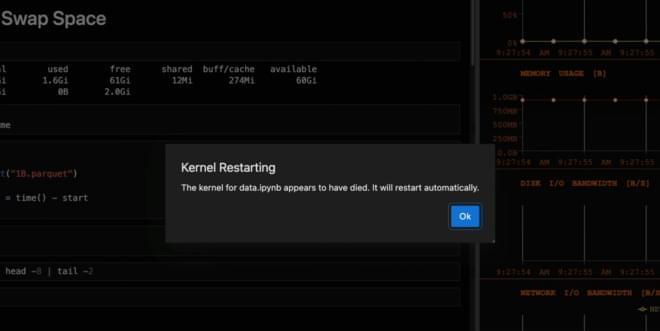Could this new chip make DNA testing as easy as checking your blood sugar?



Megathrust earthquakes are large earthquakes that occur on faults found along the boundaries between tectonic plates. The Nankai Trough is a megathrust earthquake zone lying off the southwestern coast of Japan, and experts estimate that this zone could generate a potentially devastating (magnitude 8 or 9) large earthquake sometime in the next 30 years. In addition to the direct catastrophic impact of such powerful ground shaking, a seismic event of this magnitude could trigger cascading hazards such as destructive tsunamis.
Developing the technologies for efficient and reliable seafloor monitoring is paramount when considering the potential for socioeconomic harm represented by megathrust earthquakes. Traditionally, seafloor measurements have been obtained using transponder stations located on the seafloor that communicate with satellites via buoys or ocean-going vessels to produce accurate positional information. However, data collection using such systems has problems such as low efficiency and speed.
In a study published in Earth and Space Science, researchers at Institute of Industrial Science, The University of Tokyo, addressed the challenge of acquiring reliable, high-precision, real-time seafloor measurements by constructing a seaplane-type unmanned aerial vehicle (UAV) that can withstand ocean currents and wind. This vehicle is intended for use with the Global Navigation Satellite System-Acoustic (GNSS-A)―a system that uses satellites to determine locations on Earth―to provide a communication link with seafloor transponder stations.
For the first time, researchers at #UTokyo_IIS, quickly and efficiently measure the seafloor down to the centimeter-level using an unmanned aerial vehicle.

Scientists have found a very rare mineral, which they call a dodecagonal quasicrystal, which probably formed when lightning struck near a fallen power line in a sandy region of the United States. The discovery is surprising, because until now experts doubted that such structures could form on Earth in natural conditions.
Quasicrystals are made of atoms arranged in an ordered fashion, but without the periodic repetition of a simple geometric form that is found in normal crystals. They only form in extreme temperature and pressure conditions. Because of their structure, they have magnetic and electric properties that are not found in either crystals or amorphous solids and could prove useful for many applications.
A rock discovered in Nebraska proves that a strong electrical discharge can form these exotic materials that are rarely seen in nature.


Quasicrystals (QCs) are fascinating solid materials that exhibit an intriguing atomic arrangement. Unlike regular crystals, in which atomic arrangements have an ordered repeating pattern, QCs display long-range atomic order that is not periodic. Due to this ‘quasiperiodic’ nature, QCs have unconventional symmetries that are absent in conventional crystals. Since their Nobel Prize-winning discovery, condensed matter physics researchers have dedicated immense attention towards QCs, attempting to both realize their unique quasiperiodic magnetic order and their possible applications in spintronics and magnetic refrigeration.
Although theoreticians have long expected the establishment of antiferromagnetism in select QCs, it has yet to be directly observed. Experimentally, most magnetic iQCs exhibit spin-glass-like freezing behavior, with no sign of long-range magnetic order, leading researchers to question whether antiferromagnetism is even compatible with quasiperiodicity — until now.
In a groundbreaking study, a research team has finally discovered antiferromagnetism in a real QC. The team was led by Ryuji Tamura from the Department of Materials Science and Technology at Tokyo University of Science (TUS), along with Takaki Abe, also from TUS, Taku J. Sato from Tohoku University, and Max Avdeev from the Australian Nuclear Science and Technology Organisation and The University of Sydney. Their study was published in the journal Nature Physics on April 11, 2025.
Quasicrystals are intriguing materials with long-range atomic order that lack periodicity. It has been a longstanding question whether antiferromagnetism, while commonly found in regular crystals, is even possible in quasicrystals. In a new study, researchers have finally answered this question, providing the first definitive neutron diffraction evidence of antiferromagnetism in a real icosahedral quasicrystal. This discovery opens a new research area of quasiperiodic antiferromagnets, with potential applications in spintronics.

Recent breakthroughs in artificial intelligence (AI) algorithms have highlighted the need for alternative computing hardware in order to truly unlock the potential for AI. Physics-based hardware, such as thermodynamic computing, has the potential to provide a fast, low-power means to accelerate AI primitives, especially generative AI and probabilistic AI. In this work, we present a small-scale thermodynamic computer, which we call the stochastic processing unit. This device is composed of RLC circuits, as unit cells, on a printed circuit board, with 8 unit cells that are all-to-all coupled via switched capacitances. It can be used for either sampling or linear algebra primitives, and we demonstrate Gaussian sampling and matrix inversion on our hardware. The latter represents a thermodynamic linear algebra experiment. We envision that this hardware, when scaled up in size, will have significant impact on accelerating various probabilistic AI applications.
#Repost Nature Publishing
Current digital hardware struggles with high computational demands in applications such as probabilistic AI. Here, authors present a small-scale thermodynamic computer composed of eight RLC circuits, demonstrating Gaussian sampling and matrix inversion, suggesting potential speed and energy efficiency advantages over digital GPUs.

Researchers from University of California San Diego Sanford Stem Cell Institute have developed a novel method to stimulate and mature human brain organoids using graphene, a one-atom-thick sheet of carbon. Published in Nature Communications, the study introduces Graphene-Mediated Optical Stimulation (GraMOS), a safe, non-genetic, biocompatible, non-damaging way to influence neural activity over days to weeks. The approach accelerates brain organoid development — especially important for modeling age-related conditions like Alzheimer’s disease — and even allows them to control robotic devices in real time.
“This is a game-changer for brain research,” said Alysson Muotri, Ph.D., corresponding author, professor of pediatrics, and director of the UC San Diego Sanford Stem Cell Institute Integrated Space Stem Cell Orbital Research Center. “We can now speed up brain organoid maturation without altering their genetic code, opening doors for disease research, brain–machine interfaces and other systems combining living brain cells with technology.”
[TIME SUBJECT TO CHANGE] Liftoff NET 6:30 p.m. central [23:30 UTC] — One hour launch windowSpaceX is launching the 10th full stack Starship with its Super He…


Slow data loads, memory-intensive joins, and long-running operations—these are problems every Python practitioner has faced. They waste valuable time and make iterating on your ideas harder than it should be.
This post walks through five common pandas bottlenecks, how to recognize them, and some workarounds you can try on CPU with a few tweaks to your code—plus a GPU-powered drop-in accelerator, cudf.pandas, that delivers order-of-magnitude speedups with no code changes.
Don’t have a GPU on your machine? No problem—you can use cudf.pandas for free in Google Colab, where GPUs are available and the library comes pre-installed.